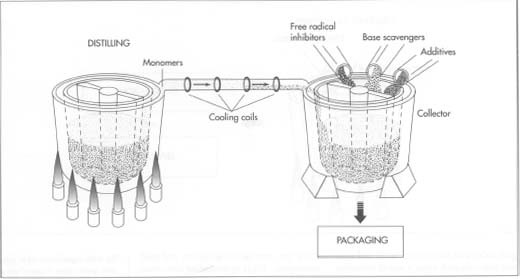
Introduction
Brief history of Egyptian cotton
Egyptian cotton has a rich history that dates back thousands of years. The cultivation of this luxurious fiber began along the banks of the Nile River, where the fertile soil and optimal climate created ideal growing conditions.
Records indicate that cotton farming in Egypt began around 3000 BC. Initially used for making simple garments, over time cotton became a significant part of Egyptian culture and economy. By the 19th century, Egyptian cotton was recognized globally for its unrivaled quality.
- High-Quality Fiber: Egyptian cotton is known for its long staple length, which contributes to its softness and strength.
- Famed Production: The Nile Delta’s unique climate—with its warm temperatures and abundant irrigation—has remained pivotal for producing premium cotton.
Importance of Egyptian cotton in the textile industry
In the textile industry, Egyptian cotton is synonymous with luxury and quality. Its unique properties have made it a preferred choice for high-end products, especially bed linens, towels, and garments.
Key points of significance include:
- Exceptional Quality: Egyptian cotton fibers are longer and finer than regular cotton, resulting in smoother, stronger, and more durable fabrics.
- Market Demand: The global demand for Egyptian cotton continues to rise as consumers seek sustainable and top-quality materials. This premium positioning allows it to command higher prices in the market.
Furthermore, Egyptian cotton has consistently played a vital economic role, contributing significantly to Egypt’s agricultural exports.
The variety of products made from Egyptian cotton, including luxury sheets, fashionable clothing, and home décor, enhances its reputation in the textile industry.
As the market evolves, the importance of Egyptian cotton remains steadfast due to its distinguished characteristics and the cultural heritage associated with its production.
This foundational understanding sets the stage for exploring the rise of Egyptian cotton and the current challenges it faces in maintaining its revered status.

Rise of Egyptian Cotton
Factors contributing to its premium status
Several factors contribute to the premium status of Egyptian cotton, distinguishing it from standard cotton varieties on the global stage.
- Long Staple Length: One of the primary characteristics that set Egyptian cotton apart is its long staple length. Longer fibers produce fabrics that are smoother, softer, and resistant to fraying, providing a luxurious feel essential for high-end textile products.
- Natural Strength: Egyptian cotton is remarkably strong, making it durable and able to withstand repeated washings without losing shape or color. This longevity appeals to consumers who seek value from their purchases.
- Superior Absorbency: The fiber’s unique structure allows it to absorb moisture effectively, making it ideal for products like towels and bed linens. This quality enhances the comfort and usability of these items.
- Sustainable Practices: Many producers of Egyptian cotton embrace environmentally friendly farming practices, further enhancing its appeal to environmentally conscious consumers.
These qualities establish a reputation that has helped Egyptian cotton become a symbol of luxury and superior craftsmanship in the textile industry.
Global demand and popularity
The popularity of Egyptian cotton continues to grow, driven by the rising global demand for high-quality textiles.
- Consumer Preferences: As more consumers seek luxury items, the appeal of Egyptian cotton has surged. Its reputation for quality translates to higher willingness to pay, thereby driving market growth.
- Expanding Markets: Countries like the United States, Japan, and many in the European Union consistently seek Egyptian cotton, recognizing it as a premium choice for both fashion and home textiles.
- Influence of Fashion Trends: The fashion industry has played a crucial role in the global popularity of Egyptian cotton. High-end designers often utilize this fabric in their collections, reinforcing its status as a mark of luxury.
Overall, the combination of inherent qualities and increasing global demand solidifies Egyptian cotton’s position in the textile market. Moving forward, understanding the challenges it faces will be essential for maintaining this esteemed reputation.

Challenges Faced
Competition from other cotton-producing countries
Despite its esteemed reputation, Egyptian cotton faces significant challenges, notably from competition with other cotton-producing countries. Several countries have emerged as formidable players in the global cotton market, notably:
- United States: Known for its high yields and technological advancements in farming, the U.S. produces large quantities of high-quality cotton that often compete on price.
- India and China: These countries are not only major producers but also have begun to enhance their cultivation methods, producing competitive products that challenge Egyptian cotton’s premium status.
This influx of alternatives has forced Egyptian cotton producers to rethink their strategies. While the intrinsic quality of Egyptian cotton remains, price sensitivity in the market means many consumers may opt for less expensive options.
Quality control issues and controversies
In addition to competition, quality control issues and controversies have plagued the Egyptian cotton industry.
- Mislabeling and Counterfeiting: Instances of mislabeling, where lower-quality cotton is marketed as Egyptian cotton, have tarnished the reputation of genuine products. This not only confuses consumers but also undermines trust in the authentic brand.
- Inconsistent Quality: Fluctuations in production standards can lead to inconsistency in the quality of Egyptian cotton. Factors such as climate change, pests, and outdated farming techniques can adversely affect yield and fiber quality.
- Controversial Practices: Concerns about labor practices in cotton farming have also emerged, with reports of unfair labor conditions and environmental impacts. These issues pose a significant threat to the perceived ethics surrounding Egyptian cotton, impacting consumer buying decisions.
Navigating these challenges requires a concerted effort from producers, the government, and industry stakeholders to ensure that the quality of Egyptian cotton not only matches its reputation but also stands firm against competition. As the industry moves forward, addressing these challenges will be essential in sustaining its esteemed position in the global market.

Decline in Export and Reputation
Decrease in production and export volumes
The Egyptian cotton industry has experienced a significant decline in both production and export volumes over the past few years.
- Farming Challenges: An increase in climate variability and environmental challenges, including water scarcity and soil degradation, has hampered cotton farms’ productivity. These factors have made it increasingly difficult for farmers to maintain consistent quality and yield.
- Market Dynamics: With growing global competition, producers have struggled to compete on price, further reducing output as many farmers shift to alternative crops that may offer better profitability.
As a result, Egyptian cotton’s export volumes have dwindled significantly. Data indicates that exports fell from around 200,000 tons in 2010 to approximately 100,000 tons by 2020. This decline has raised concerns regarding the sustainability of the industry.
Impact on the Egyptian economy
The decline in production and export volumes has had profound repercussions for the Egyptian economy, particularly in rural areas where cotton farming is a primary livelihood.
- Employment Losses: With fewer cotton crops being cultivated, many farmers have faced job losses or reduced incomes. This situation creates a ripple effect that harms local economies, impacting related industries such as textiles and agriculture.
- Reduced Foreign Earnings: Egyptian cotton export revenues, historically a significant contributor to national income, have been negatively affected. This reduction in foreign currency inflow can impact the overall economic stability of the country.
- Decreased Investment: The diminishing reputation of Egyptian cotton has led to decreased interest from both local and foreign investors. The once booming sector finds itself struggling to attract the necessary capital for sustainable growth and modernization.
Consequently, it is clear that the downturn in Egyptian cotton production and exports affects not only the industry but also broader economic health. Rectifying this trajectory will require dedicated initiatives at multiple levels, including improvements in farming techniques, enhanced quality control, and aggressive marketing strategies. Addressing these challenges effectively is crucial for restoring both the industry’s reputation and its economic significance.

Rebranding Efforts and Future Prospects
Initiatives to regain market share
In response to the declining reputation of Egyptian cotton, several initiatives have emerged aimed at reclaiming its premium market position. These efforts are designed to address quality issues, rebuild trust with consumers, and enhance visibility in the global market.
- Quality Assurance Programs: To combat mislabeling and inconsistencies, several organizations are implementing rigorous quality control measures. Certification programs are being introduced to verify authentic Egyptian cotton, ensuring consumers receive the quality they expect.
- Collaborations and Partnerships: The Egyptian government is partnering with international textile brands to promote the unique benefits of Egyptian cotton. By collaborating on marketing campaigns and showcasing its superior qualities, these partnerships aim to elevate the product’s market presence.
- Sustainable Practices: As environmental concerns continue to influence consumer behavior, initiatives promoting sustainable farming practices have gained traction. By implementing eco-friendly cultivation techniques, producers aim to appeal to a growing demographic of environmentally conscious consumers.
These initiatives represent critical steps toward restoring the heritage and integrity of Egyptian cotton.
Potential strategies for revitalization
To further enhance the prospects of the Egyptian cotton industry, a variety of strategies might be employed:
- Diversification of Products: Expanding the range of products made from Egyptian cotton, such as luxury bedding, fashion apparel, and home textiles, can capture new market segments. Customization and unique offerings may differentiate Egyptian cotton from alternatives.
- Innovative Marketing: A comprehensive marketing strategy that highlights the luxury and heritage of Egyptian cotton could attract attention. Utilizing social media, influencer partnerships, and engaging storytelling can create a compelling narrative around the product.
- Investment in Technology: Modernizing production processes through technology can significantly enhance efficiency and quality. Innovations such as precision agriculture and data analytics can help farmers optimize their yields and improve sustainability.
By implementing these revitalization strategies, the Egyptian cotton industry can better position itself to compete in a dynamic global marketplace. Addressing the challenges and building a strong brand identity can pave the way for a promising future, re-establishing Egyptian cotton as a beacon of quality in the textile industry.

Conclusion
Recap of Egyptian cotton’s export evolution
The journey of Egyptian cotton exports has been a story of unparalleled prestige mixed with significant challenges. Known historically for its exceptional quality, Egyptian cotton once dominated the global textile market.
Over the years, several factors contributed to a shift in its export dynamics:
- Quality and Reputation: Egyptian cotton’s long fibers and luxurious texture established it as the premier choice for high-end textiles. This reputation initially positioned it at the forefront of international markets.
- Declining Production: However, a decline in production volumes due to environmental challenges and competitive pressures has eroded its market share. The rise of other cotton-producing nations has further complicated its standing.
- Economic Impact: The dwindling exports have not only affected the cotton industry but have also had broader implications for the Egyptian economy, particularly in rural communities that rely heavily on cotton farming for their livelihoods.
Reflection on the future of Egyptian cotton in the global market
Looking ahead, the future of Egyptian cotton remains both challenging and optimistic. Several factors will shape its trajectory:
- Rebranding and Sustainability: As the industry focuses on rebranding efforts and sustainability, there is potential to regain its position in the global market. By emphasizing environmentally friendly farming practices and transparency, producers can appeal to modern consumers.
- Technological Advancements: Investment in technology and innovation in cultivation methods can enhance productivity and quality, making Egyptian cotton competitive again. Advancements in bioengineering and smart farming techniques can lead to improved yields under challenging climate conditions.
- Market Adaptation: Understanding evolving market trends and consumer preferences will be crucial. Adapting offerings to suit contemporary demands, including customization and sustainable options, can reinvigorate interest in Egyptian cotton products.
In conclusion, while Egyptian cotton faces substantial challenges, strategic initiatives aimed at quality assurance, sustainable practices, and effective marketing can pave the way for revitalization. With a concerted effort from all stakeholders, the iconic status of Egyptian cotton in the textile industry may once again flourish, solidifying its legacy for future generations.





